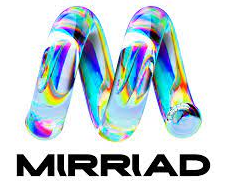“On TV & Video” is a column exploring opportunities and challenges in advanced TV and video.
Today’s column is written by Maria Teresa Hernandez, VP of brand partnerships at Mirriad.
More than two years after social justice calls put pressure on Madison Avenue to allocate larger budgets toward diverse media, Latino consumers are more empowered to hold their favorite brands accountable.
Today, Latinos make up nearly 20% of the current U.S. population. They’re also the future of America. Almost 30% of all kids are Latino. But despite U.S. Latino consumer power coming in at around $1.7 trillion annually, only 6% of the overall industry investment goes toward this market.
Herein lies the big opportunity for brands that are determined to make up that gap: Latinos are young, growing and a major economic powerhouse. And streaming and on-demand video are particularly good ways to reach them. That’s because Hispanic audiences can find more of the content that they want to watch on these platforms, making them 17% more likely to have CTV apps installed on their devices than general audiences.
Executing a diverse campaign effectively
Earlier this year, H Code released a study that found if a brand makes an effort to include elements of Hispanic culture in its marketing, 71% of Hispanic/Latinx consumers are more likely to think favorably of it or purchase its products. So what does it mean to “make an effort”?
Earmarking a budget to spend is a fantastic way to start reaching this audience. But it is only the beginning. Often, well-meaning brands are not entirely sure how to move forward.
Culturally diverse audiences are tricky to address. And while we tend to get lumped under a monolithic umbrella of “Latinidad,” we are hardly a one-size-fits-all type of audience.
The good news for brands is that audiences react very positively to brands that show up in culturally and contextually relevant ways.
Kantar found that signage with in-language messaging inserted into in-language programming drove significant brand lift for advertisers. Virtual billboards in a program provide a blank canvas for messaging in a way that allows you to speak directly to your target consumer, not only in language but in culture.
Impressively, virtual product placement in prime-time novelas also drove a 35% lift in ad awareness, proving Latinos appreciate when their favorite brands show up in their favorite programs.
There’s no shortage of diverse content
I often hear media clients call out the lack of scale in diverse content. Earlier this year, P&G Chief Brand Officer Marc Pritchard called out a shortage of media inventory, with Black-owned media representing less than 1% of total TV inventory and 3% of digital. This number dwindles for Latino-owned media.
However, this isn’t to say the content doesn’t exist. Brands just have to look beyond traditional media types.
With the dominance of social media and influencers, it’s no surprise that 64% of Latinos ages 18–49 said they see influencers as “trusted sources” and consider buying the brand or service they’re promoting.
And while virtual product placement and signage in novelas allows for a whole new way to connect with Latino consumers, music videos are not too far behind in offering massive Latino viewership.
Look at reggaeton, a previously niche music genre that has exploded on the global scene. Despite having huge global audiences, stars like Bad Bunny and Ozuna have been overlooked by U.S. advertiser brands until recently.
Brands need to get smart about which stars could provide great sponsorship and advertising partnership opportunities, both on a culturally specific and global level.
Don’t miss out
With many of Madison Avenue’s commitments to Black-owned media going into effect in 2022, advertisers shouldn’t walk away from content partners who may not be certified diverse-owned, yet.
While the “certified” stipulation might be good for certain larger corporate goals, the certification requirement can actually put a burden on smaller, independent content owners who might not have the resources to get certified or understand the importance of being certified. So, brands need to look beyond this label.
As complicated as multicultural marketing can be, it can also be hugely valuable. U.S. Latinos are young, their cultural and economic dominance is growing, and they have the power of influence at their disposal. Now is the time for brands to build relationships that will last throughout their lives.
A bit more work is required, but the brands that take those extra steps will stand out and reap the rewards.
Follow Mirriad (@Mirriad) and AdExchanger (@AdExchanger) on Twitter.
For more articles featuring Maria Teresa Hernandez, click here.














